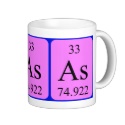|
|
Reference type: Journal
Authors: Wang J, Lu T, Zhao MP, Li YZ
Article Title: Recognition performance of o-phthalic Acid-Cu(Ac)(2) molecular imprinting polymers.
Publication date: 2006
Journal: Chemical Journal of Chinese Universities
Volume: 27
Issue: (8)
Page numbers: 1566-1569.
Alternative URL: http://www.cjcu.jlu.edu.cn/CN/abstract/abstract9960.shtml
Abstract: Molecularly imprinted polymer (MIP) was synthesized by using the complex of o-phthalic acid-Cu(Ac)(2) as the template. The experimental results show that Cu(Ac)(2)-o-PA imprinted polymer [ P(PA/Cu)] has selective binding to its template complex, including selectivities to the anions, cations and o-PA analogues of the complex. The possible structure of the complex Cu(Ac)(2)-o-PA is also proposed according to the crystal structures of similar systems. According to the results, the acetate in Cu ( Ac), also participated the imprinting process and is a part of the template. Therefore, it plays an important role in the recognition of template and its analogue complexes. Additionally, the high retention of o-PA-imprinted polymer [P(PA)] toward Cu(Ac)(2)-o-PA and similar Cu-complexes over o-PA itself is well explained by the binding similarity between 4-VP/o-PA and 4-VP/Cu(Ac)(2)-o-PA. The metal ion-mediated imprinting approach of present study may find applications for the compound which can not be directly imprinted
Template and target information: o-phthalic acid-Cu(Ac)(2), Cu(Ac)(2)-o-PA
Author keywords: o-phthalic acid, copper acetate, molecularly imprinted polymer, copper(II) complex, acid, acetate
|


 Mipdatabase periodic table mug
Mipdatabase periodic table mug







 Element 33 mug - Arsenic
Element 33 mug - Arsenic







 Element 31 mug - Gallium
Element 31 mug - Gallium






